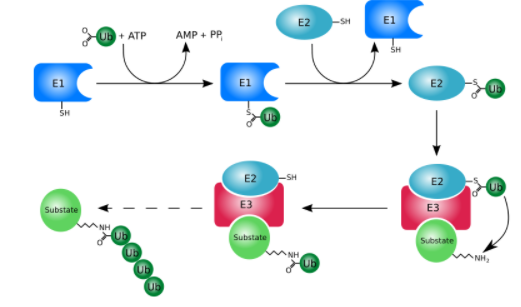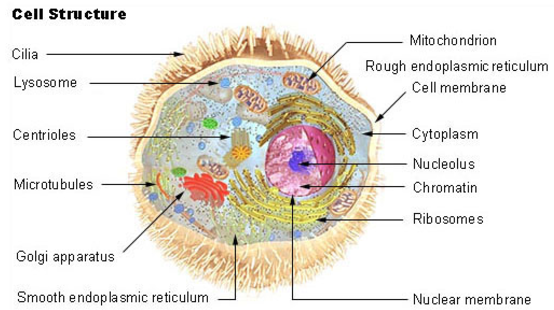6.5.3: 6.43 Protein Turnover/Degradation
- Page ID
- 1499
Proteins serve a number of functions in the body, but what happens when cells, enzymes, etc. have completed their lifespan? They are recycled.

Figure 6.431 Recycling symbol1
Proteins are broken down to amino acids that can be used to synthesize new proteins. There are 3 main systems of protein degradation:
- Ubiquitin-proteasome degradation
- Lysosome degradation
- Calpain degradation
1. Ubiquitin-Proteasome Degradation
Proteins that are damaged or abnormal are tagged with the protein ubiquitin. There are multiple protein subunits involved in the process (E1-E3), but the net result is the production of a protein (substrate) with a ubiquitin tail, as shown below.

Figure 6.432 Ubiquitination of a protein (substrate)2
This protein then moves to the proteasome for degradation. Think of the proteasome like a garbage disposal. The ubiquitinated "trash" protein is inserted into the garbage disposal where it is broken down into its component parts (primarily amino acids). The following video illustrates this process nicely.
|
Web Link |
2. Lysosome Degradation
The lysosomes are organelles that are found in cells. They contain a number of proteases that degrade proteins.

Figure 6.433 Lysosomes are organelles within the cell3
3. Calpain Degradation
The last degradation system is the calpain system, which is not as well understood, but does require calcium.
References & Links
- en.Wikipedia.org/wiki/File:Re...ing_symbol.svg
- en.Wikipedia.org/wiki/File:Ubiquitylation.svg
- en.Wikipedia.org/wiki/File:Il..._structure.jpg
-
Video
Proteasome Degradation - https://www.youtube.com/watch?v=w2Qd6v-4IIc


